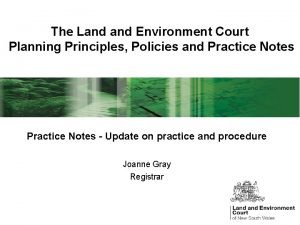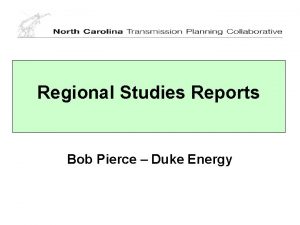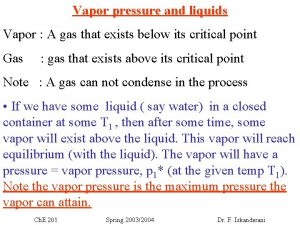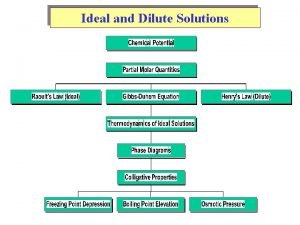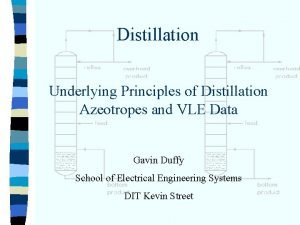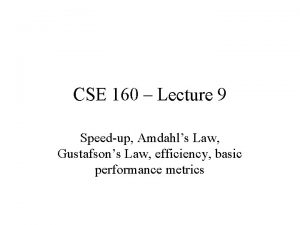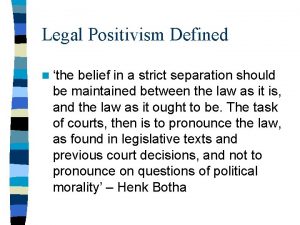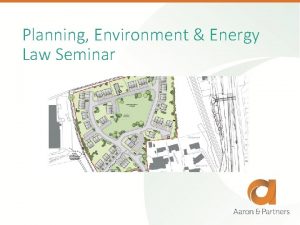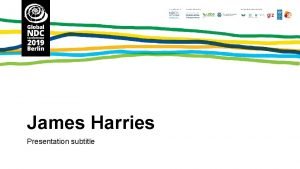Planning Environment Energy Law Seminar Welcome David Harries









































![Recent “screening” cases R (oao An Taisce) SSECC [2014] EWCA Civ 1111: Hinkley Point Recent “screening” cases R (oao An Taisce) SSECC [2014] EWCA Civ 1111: Hinkley Point](https://slidetodoc.com/presentation_image_h2/483557d37cb1ad1d01c65cec3cec48b4/image-42.jpg)
![Recent Cases (cont’d) R (oao Jedwell) v Denbighshire CC [2015] EWCA Civ 1232/ EWHC Recent Cases (cont’d) R (oao Jedwell) v Denbighshire CC [2015] EWCA Civ 1232/ EWHC](https://slidetodoc.com/presentation_image_h2/483557d37cb1ad1d01c65cec3cec48b4/image-43.jpg)
![Recent Cases (cont’d) Mackman v SSCLG [2015] EWCA Civ 716: “. . . a Recent Cases (cont’d) Mackman v SSCLG [2015] EWCA Civ 716: “. . . a](https://slidetodoc.com/presentation_image_h2/483557d37cb1ad1d01c65cec3cec48b4/image-44.jpg)























- Slides: 67

Planning, Environment & Energy Law Seminar

Welcome David Harries Partner & Head of Planning, Environmental, Energy & Regulatory Law

HOUSING & PLANNING ACT 2016 What can we expect for planning in England David Delaney Partner – Head of Planning Aaron & Partners LLP

AGENDA 1. Introduction 2. Starter Homes 3. Neighbourhood Planning 4. Local Plans 5. Planning Permission in Principle & Technical Design Consent 6. Brownfield Register 7. Planning Performance Regime 8. Planning Freedoms Scheme 9. Information on Economic Benefits 10. NSIPs - Housing 11. Dispute Resolution for Planning Obligations 12. Alternative Provision for processing planning applications 3 02/01/2022

Introduction • Fixing the Foundations - Treasury’s blueprint for 2015 -2020 “Creating a more Prosperous Nation” • Housing and Planning Bill • Increase number of homes being built • More planning applications to be determined on time • Release land for house-building • Certainty on delivery of housing to first time buyers • Permission in Principle - Qualifying documents and direct applications • Royal Assent in May 2016 4 02/01/2022

Starter Homes Definition: • a new dwelling not previously occupied, • only available to first time purchasers who must be under 40, • sold at 20% discount of market value Discounted Starter Homes sold within 5 to 8 years to either pay the discount back (the payment model) or sell to another qualifying first time buyer (the sales model) LPAs statutory duty to promote Starter Homes: • generally when planning functions are carried out, and • specifically when determining planning applications Residential development to provide 20% Starter Homes - Regulations S 106 Agreements for payments of commuted sums for off-site provision Starter Homes Report as from April 2017 Viability exceptions. 5 02/01/2022

Neighbourhood Planning Speed up the process for adoption of Neighbourhood Plans Secretary of State can intervene to: - • set time limits to hold Referendum • Order the LPA to hold a Referendum • Intervene if the LPA is to make modifications not recommended by the examiner • Designate the whole area • Set date for adoption of the plan where it has been approved at Referendum • Direct an LPA to act in a way not in accordance with examiner’s recommendations • Neighbourhood Forum can request the LPA to notify it of planning applications for its area Neighbourhood Development Plan and Proposed Development • 6 Officer’s Report explaining how the Plan was taken into consideration in making recommendation and to identify areas of conflict

Local Plans Fixing the Foundations set deadline of early 2017 for publication of Local Plans. In the absence of a Plan the Secretary of State can prepare a Plan and require the LPA to bring into effect. Intervention powers greatly increased – “more targeted and proportionate intervention”. • LPAs to prepare or revise a DPD • submit the DPD to independent examination • publish the Inspector’s recommendation • submit a Plan for approval • set out what is to happen following an intervention • require LPA to consider whether or not to adopt the Plan • issue a “holding direction” 7 02/01/2022

Local Plans Inspectors can be directed to suspend an examination, consider specified matters, hear from specified persons or take other specified steps. Criteria for intervention: - • Authorities who have made the least progress in plan-making or policies not kept up-to-date • Area has higher housing pressure and intervention will have greatest impact • Extent of cooperation with other authorities – progress on city regions devolution deals • Potential impact of not having a Local Plan has on neighbourhood planning activity. LPAs will be able to cite exceptional circumstances which they consider it unreasonable for Government intervention with a general “exceptional circumstances” tests proposed. Bi-annually information showing age of Local Plan and measures of progress Costs of further examination payable by the LPA 8 02/01/2022

Planning Permission in Principle • Permission in Principle and Technical Details Consent = Full Planning Permission • Housing led development • Nationwide Development Order granting permission for sites allocated in “qualifying documents” - future Local and Neighbourhood Plans and Brownfield Registers Permission granted by a qualifying document – five years or less • Direct Applications to LPA for sites that meet the criteria in the Order Permission valid for 3 years or less • Planning Conditions – TDC • Mechanism can be extended to other uses • EIA to be considered at local plan or application stages • Community and Interested party consultation at PIP stage – not mandatory at TDC stage – matter for LPA on approach it takes. 9 02/01/2022

Technical Details Consent • PIP and TDC for there to be a full planning permission. • No re-opening or reconsideration of the principle of development. • Can only be refused if the TDC is not on basis of previously considered matters or there has been a material change in circumstances as regards the site. • Conditions imposed, S 106 Agreements and Community Infrastructure Levy. • Appeal mechanisms for both PIP and TDC. . 10 02/01/2022

Brownfield Register Previously developed land suitable for housing. Register Part 1 - Land deemed to have automatic planning permission Part 2 - brownfield land not suitable for housing e. g. allocated employment site Sites identified from strategic housing land availability assessments (SHLAAs) and housing and economic land availability assessments. To be suitable for housing, sites will need to be: • available (either deliverable within 5 years or developable and likely to come forward within 5 -10 years) • capable of supporting five or more dwellings or more than 0. 25 hectares and capable of development • unaffected by constraints that cannot be mitigated. No provision for independent examination, appeal or Ministerial intervention. 11 02/01/2022

Planning Performance Regime • Poorly Performing LPA’s - non-major Planning applications can be made to Planning Inspectorate • Secretary of State can exclude certain Minor Applications • LPAs with track record of very poor performance in speed or quality of decision making. • Criteria for poorly performing: • LPAs fail to determine on time 60 -70% of non-major applications over two years, or 10 -20% overturned on Appeal 12 02/01/2022

Planning Freedom Scheme LPAs following consultation, apply to Secretary of State for time limited powers to disapply or modify national planning rules to facilitate an increase in housing. Secretary of State to be satisfied of need for significant increase and scheme will bring that about. No impact on Greenbelt 13 02/01/2022

Information on Economic Benefits Officers Report to Planning Committee on economic benefits whether or not material to the decision. • CIL contributions, New Homes Bonus Grants and other government grants and any other benefit set out in Regulations • Council tax revenues, business rate revenue and S 106 payments • Other financial benefits should be listed for example shale gas community benefit payments, “where it is considered likely they will be payable if development proceeds. ” 14 02/01/2022

Nationally Significant Infrastructure Projects NSIP can include housing to be linked either: - • Functionally – more than 500 permanent housing for key workers during construction phase but no more than that number converted into permanent homes, or • Geographical proximity – 500 houses adjacent to a railway line (reasonable commute) or within a mile of the project. Housing assessed against NPPF. Affordable housing to be provided by s 106 obligations in accordance with policy. Housing examined as a discrete element and can be severed from the DCO. 15 02/01/2022

Planning Obligations Dispute Resolution Process Mandatory to resolve issues by a person appointed when negotiations have stalled. • Secretary of State to have concluded that planning permission will be granted if an Agreement is in place. • Obligation on parties to co-operate and comply with any requests from the appointed person. • LPA may not refuse permission on a ground that the s 106 terms are inappropriate if in accordance with appointed person's report. • Unilateral Undertaking containing recommended obligations if LPA refuses to enter into an Agreement. • Planning application refused if no Agreement not entered in set time. • No appeal until procedure concluded and LPA cannot refuse permission. • Costs shared evenly unless one party fails to engage or otherwise acts unreasonably. 16 02/01/2022

Alternative Provision for processing planning applications • Pilot Schemes – temporary arrangements to test competition • Developers choice • Negotiations on s 106 obligations with alternative Provider • Decision on the Application not taken by alternative provider – decision remains with the LPA • Alternative Provider to assist LPA on Appeals and JR’s 17 02/01/2022

Energy and Planning - Update Mike Hopkins Planning and Development Director

INTRODUCTION 1. Brief look to Government Policy on Renewable Energy, including a look at the last few months of the May administration 2. Consider the challenges for renewable energy 3. Climate Change Act and carbon reduction targets 4. Smart Heat and Energy Systems 5. Case Study ETI Catapult – Greater Manchester 19

1 Government Policy 1. 2015 Conservative Party manifesto o Promise to halt spread of subsidised wind farms o Silent on solar o Support for nuclear and gas including shale o All of UK will help to deliver secure affordable and low carbon energy 2. June 2015 – Written Ministerial Statement on on-shore wind o Permission only granted on identified sites and where supported by local communities 3. July 2015 – Government announced it would no longer pursue 2016 zero carbon homes target. 4. December 2015 – cuts to solar subsidies 5. July 2016 – reduction in support for biomass CHP schemes 6. September 2016 ECC Committee released report on 2020 targets 7. No immediate attempts to change policy, carbon emissions or climate change obligations. Possible future reduction in funding to green technologies 20

1 NEW ENERGY PROJECTS? • Government aims to ensure that there are no delays with current energy infrastructure • Look outside EU for funding – already happening… • Government has given go-ahead for new station at Existing and Proposed Sites for Nuclear Power Stations Hinkley Point and application has been submitted at Bradwell - both funded by Chinese investment • Clark’s enthusiasm for Localism could mean an emphasis on decentralised forms of energy production? • Increased emphasis on the importance of jobs and economic growth in planning decisions and planmaking. Likely to be heightened with the backing of BEIS. 21

2 Challenges for Renewable Energy • 2008 Climate Change Act – UK appears to be committed to reduce emissions by at least 80% by 2050 from 1990 • • levels Removal of financial subsidies Restrictions of Planning for onshore wind • Out of 63 appeal decisions for onshore wind 57 have been dismissed by the Government, 24 of which • • were recommended to be approved. Full scope of Brexit impact is difficult to predict without knowing the relationship the UK will have with the EU. Current domestic planning is hostile towards land based energy particularly on shore wind and solar 22

3 Climate Change Act 2008 – The Challenge • • The Climate Change Act requires that carbon budgets are set on track to meeting the 2050 target to reduce emissions by at least 80% relative to 1990. Significant ongoing reductions in emissions will be required if the UK is to credibly remain on track to the 2050 target. “Good progress in reducing UK emissions will not continue without urgent action to strengthen policies” Committee on Energy Climate Change - June 2016

4 Climate Change – The Challenge To achieve targets Government has identified that it is essential that : Energy efficiency and behaviour change • Reducing the level of energy demand through improved efficiency and changes to consumer behaviour. However, it is clear that this alone will not be enough to reduce emissions by 80%, and fuel switching to low-carbon sources will also be needed. Power sector • Meeting the target is likely to require a power sector with very low emissions in 2050. This is needed to decarbonise existing demands for electricity and to meet new demands in heating buildings. Heat • Accounts for 40% of UK energy demands, with domestic heating accounting for 20% of all UK CO 2 emissions, over 90% through gas boilers

4 Smart Heat and Energy – The Challenge Government announcement in 2015 Spending Review “The government will provide over £ 300 m of funding on heat networks over the next five years …. . leveraging around £ 2 bn of private and local capital investment…. . expected to lead to the construction of some 200 large heat networks in towns, cities and communities across England Wales heating commercial offices, public sector buildings like hospitals and schools, as well as flats and houses by 2025”

4 Case Study - Smart Heat & Energy Programme • Public Private Partnership between global energy and engineering companies and the UK Government. • Target and de-risk new technologies for affordable and secure energy • Development of affordable technology to provide sustainable energy and help meet emission targets • ETI …”The UK will need to all but eliminate emissions from domestic heating if it is to meet its carbon targets”

5 ETI - Catapult – Smart Systems Heat Programme • Objective - The programme looks at practical and cost effective heating solutions • Creation of an Energy Path Model and creation of Energy Masterplan which will identify most practical cost effective heating solution in one area for both new homes and retrofitting • Develop demonstrator schemes with an Energy Masterplan

5 ETI - Catapult – Smart Systems Heat Programme • ETI have identified 3 areas to work with to run demonstrator schemes: 1) Greater Manchester Combined Authority 2) Newcastle 3) Bridgend • In GMCA new software is being developed solutions to for identify local heat different areas and residential opportunities for new heat networks or retrofit solutions.

5 ETI - Catapult – Smart Systems Heat Programme- • Greater Manchester • 2. 7 million people • 1. 1 million homes • Gas is primary heating for 96% of homes • Carbon reduction target of 48% by 2020 • Priority to provide decentralised low carbon energy critical to economic growth • District heating significant potential raising from current level of 1% to 30% of space heating by 2050 equivalent of 330, 000 homes • Significant technical potential in GM for future energy demand met by: • Heat networks • Solar technologies (heat and power) • Heat pumps • Biofuel

5 Greater Manchester – Spatial Energy Plan – Delivery • Planning system has a crucial role in facilitating delivery of Spatial Energy Plans • • National level: • NPPF • NPPG • GPDO Local level through the GMSF and individual Local Plans, similar approach to London Plan

5 Greater Manchester – Spatial Energy Plan - Delivery Possible planning approach in Greater Manchester, based upon London Plan could include: - 1. Need to set formal carbon target to 2030 and beyond 2. GM wide policy which recognises the need to address low carbon energy in homes and buildings 3. Policy to promote sustainable retrofitting of buildings including “retrofitting zones”; 4. Setting targets for local decentralised energy networks eg London is 25% by 2025; 5. Major development proposals will be required to identify energy systems prioritising connection to heat and cooling networks; 6. Each district to prepare a Local Area Energy Strategy; 7. Identification of heat network opportunity areas where development will be focused. 8. Encourage the introduction of Local Development Orders for new energy centres and associated equipment within identified opportunity areas.

Any Questions Mike Hopkins Planning and Development Dire

ENVIRONMENTAL IMPACT ASSESSMENT Dr. Justin Neal Senior Associate & Head of Environmental Law Aaron & Partners LLP

Problems for Development • Relatively few developments go on to require an EIA. Most recent survey from EU Commission: UK 243 EIAs in 2008; France 4, 200 (GHK 2010 survey). . . • . . . But many subject to process of screening • Document-heavy non-EIA applications which cover similar ground to EIA (pre-application especially) • Duplication with HR and appropriate assessment • Requests for Screening Direction from S or WM may hold up development • Legal challenge from third parties 34 02/01/2022

EIA – history in brief • The EIA Directive (85/337/EEC) in force since 1985 • Significant amendments - codified version with all amendments is 2011 ((Directive 2011/92/EU) • Town and Country Planning (Environmental Impact Assessment) Regulations 2011 (SI 2011/1824) in England • Town and Country Planning (Environmental Impact Assessment) (Wales) Regulations 2016 (SI 2016/58) in Wales • New Directive in 2014 and further amendments to Welsh EIA Regulations proposed (expected for England too) 35 02/01/2022

Article 2 of the Directive “Member States shall adopt all measures necessary to ensure that, before consent is given, projects likely to have significant effects on the environment by virtue, inter alia, of their nature, size or location are made subject to a requirement for development consent and an assessment with regard to their effects. . . ” 36 02/01/2022

Mandatory or Discretionary? Mandatory • Annex I/Schedule 1 - all projects listed require EIA (e. g. major power plants, nuclear plants, large capacity waste incinerators, motorways, large waste water treatment plants etc). 37 02/01/2022

Mandatory or Discretionary? Discretionary 38 • Annex II/Schedule 2 - National authorities have to decide whether an EIA is needed – using thresholds and criteria. • Schedule 2 of the EIA Regulations – e. g. hydropower over 0. 5 mw; wind where two or more or hub over 15 m; housing - changed in 2015 from 0. 5 hectares; now over 5 hectares or more than 150 dwellings. 02/01/2022

Screening test Does the development come under schedule 2? • If so, does it exceed the Schedule 2 threshold? • Is it in a sensitive are (including domestically designated areas such as SSSIs and EU Natura 2000 sites)? • Is it “likely to have a significant effect on the environment by virtue of its nature, size or location”? • If the answer is positive, then an EIA (ES) is required. 39 02/01/2022

Legal Challenge The most common grounds for challenge are that the: • Screening process was not carried out • Screening process not carried out properly – see schedule 3 (often missing cumulative assessment issues etc) • Not all of the relevant environmental impacts were assessed • Not all the statutory bodies consulted • Consultation of public 40 02/01/2022
![Recent screening cases R oao An Taisce SSECC 2014 EWCA Civ 1111 Hinkley Point Recent “screening” cases R (oao An Taisce) SSECC [2014] EWCA Civ 1111: Hinkley Point](https://slidetodoc.com/presentation_image_h2/483557d37cb1ad1d01c65cec3cec48b4/image-42.jpg)
Recent “screening” cases R (oao An Taisce) SSECC [2014] EWCA Civ 1111: Hinkley Point Nuclear PS. No transboundary consultation and negative screening of environmental cross boundary effects. Accident not more than once in 10 m years. Claimant argued “likely” = unless significant environmental effects cannot be excluded (Habitats Directive requirement for “Appropriate Assessment” (Waddenzee)). Held that likely means “real risk” of significant effect on the environment. R (oao Roskilly) v Cornwall Council [2015]: Planning permission granted by LPA before S of S gave his screening direction was unlawful R (oao Champion) North Norfolk DC [2015]: Development near river (SAC) – screened but no EIA as impacts can be left to future mitigation. Where in doubt – precautionary approach – do an EIA. But no prejudice to claimant’s EU rights – no quashing order 41 02/01/2022
![Recent Cases contd R oao Jedwell v Denbighshire CC 2015 EWCA Civ 1232 EWHC Recent Cases (cont’d) R (oao Jedwell) v Denbighshire CC [2015] EWCA Civ 1232/ EWHC](https://slidetodoc.com/presentation_image_h2/483557d37cb1ad1d01c65cec3cec48b4/image-43.jpg)
Recent Cases (cont’d) R (oao Jedwell) v Denbighshire CC [2015] EWCA Civ 1232/ EWHC [2016]: Wind turbines in North Wales. Schedule 2 – negative screening opinion adopted under the 1999 EIA Regulations in force in Wales. Claimant argued no evidence cumulative impact taken into account. Reasons for decision given upon request after decision made. Cross-examination of planning officer refused – appeal to CA from HC – CA agreed in exceptional circumstances. Back to HC. Held that although there had been a failure to give reasons at the right time, made no difference to outcome – no quashing order (see also changes post Criminal Justice and Courts Act 2015 – no material difference – s 31 (3 C) 1 March 2016 new EIA regulations are in force in Wales which require – as in England – a statement of the “full reasons” for a negative screening opinion to accompany the opinion itself. 42 02/01/2022
![Recent Cases contd Mackman v SSCLG 2015 EWCA Civ 716 a Recent Cases (cont’d) Mackman v SSCLG [2015] EWCA Civ 716: “. . . a](https://slidetodoc.com/presentation_image_h2/483557d37cb1ad1d01c65cec3cec48b4/image-44.jpg)
Recent Cases (cont’d) Mackman v SSCLG [2015] EWCA Civ 716: “. . . a linguistic analysis of the screening opinion is required, but I do not accept the submission that the analysis should take place in a vacuum. ” Not required to give same detail as inspector’s decision. 43 02/01/2022

Changes to EIA Regime in Wales: EIA Consultation Wales is consulting on changes to EIA Regulations to comply with the 2014 Directive (so too is Scotland but not England. . . yet) Highlights. . • Third party screening requests Limit third party requests for screening direction from the Welsh Ministers. • Scoping ES must be based on scoping opinion and increase timeframe. • EIA/Habs Coordination of HR and EIA: designating an authority to coordinate the individual assessments. 44 02/01/2022

Changes to EIA Regime in Wales: EIA Consultation (cont’d) • Consultation and participation in the decision making process Application and ES available online; public consultation on ES increase from 21 to 30 days. • Monitoring of significant effects General requirement on the LPA, or Welsh Ministers, to include monitoring measures where appropriate 45 02/01/2022

Brexit • No change until at least 2 years after Article 50 of the Treaty is triggered and European Communities Act 1972 to be repealed. • Business as usual until then (but transitional arrangements likely). • Three basic options for “Brexit”: i) European Economic Area (EEA) membership • If you want access to the Market, you need to comply! • EIA included in EEA annex • Habitats Directive not in EEA • Different regime of enforcement and Court of Justice of the European Union no longer has jurisdiction 46 02/01/2022

Brexit ii) The “Full Brexit” • Once European Communities Act 1972 repealed –need overarching primary legislation if EIA requirements continue to apply. • If the UK holds onto EIA regime, could be watered-down (remember “Red-Tape Challenge? ) but civil service is likely to be busy fire-fighting; • Simple solution of passing primary legislation to “enact” EIA and other directives is likely. • Domestic Courts only and not CJEU for enforcement or help with interpretation. 47 02/01/2022

Brexit iii) Negotiated, bespoke agreement outside EU and EEA • Widely-discussed “Swiss Model”: Switzerland has agreements with the EU which have evolved over time. • EU law requirements may be limited to those directly affecting trade - probably not including EIA - but UK likely to retain an EIA process for simplicity’s sake. 48 02/01/2022

Brexit Questions: • Will the constituent countries of the UK pursue different paths to implementing environmental law including EIA under delegated powers? • Will the amendments to the current EIA Regulations in Wales (and eventually England) be made? 49 02/01/2022

Energy Update and Storage Opportunities Keith Mc. Kinney Associate Solicitor Aaron & Partners LLP

Recent Developments RO Feed-in-Tariff Ministerial Statement and new Government Nuclear Tidal • • • 51 02/01/2022

The Current Position • 2020 Target of 15% of energy generation by renewables – Currently stand at 8. 3% • National energy policy • Demand Side Balancing Reserve (DSBR) • “Resuscitation” provisions • Wednesday 14 th September 2016 – highest wholesale electricity price in 10 years! 52 02/01/2022

Problems facing the UK electricity market • Energy generation, consumption and storage is a political hot potato • Renewable generation • Energy security • Ageing infrastructure • Change in consumer demands 53 02/01/2022

Storage – a potential solution • Energy storage is the capture of energy produced at one time for use at a later time • Storage allows consumers and suppliers to take energy and store it so that it can be used when it is most needed. Storage technology allows consumers to buy electricity when it is cheap and use it later when it is needed. • Over the last decade there has been a great deal of innovation in energy storage technologies because: i) Reduction in cost of technology. ii) Storage could be used domestically and commercially • “ 8 Key Technologies” • Projection of 1. 6 GW by 2020 54 02/01/2022

Home Batteries • Work well with solar panels • Avoid using the grid • Charge when rates are lower • Emergency backup • Costs vary - £ 2 K/£ 3. 2 K 55 02/01/2022

Pumped-Hydro Storage • The main source of storage is through pumped hydro – simply converting electric energy into potential energy and back by moving water up and down a hill through a turbine. • Technology is reliant on topographical features however significant potential still exists. For example, Quarry Battery Company and Ffestiniog • Largest capacity of energy storage worldwide 56 02/01/2022

Compressed Air • Similar storage characteristics to pumpedhydro storage • Excess generation is used to compress air at off-peak times • When power is needed, pressurised air is released via a turbine • Poorer efficiency than pumped-hydro 57 02/01/2022

Thermal Energy Storage • May be implemented using a wide range of technologies • Allows the temporary storage of energy in the form of heat • E. g. solar thermal power uses excess energy produced during peak sunlight hours to heat molten salt to extremely high temperatures. The excess heat can then be used to generate steam to drive a turbine. 58 02/01/2022

Commercial Batteries • Sodium-sulphur batteries were most common but lithium-ion batteries are on the way • Up to 100 MW (USA) – UK 49 MW • Work well in conjunction with renewable developments (or just import from grid) • Store electricity and send to the grid when needed • The cost of lithium-ion batteries has decreased from more than $3, 000/k. Wh in 1990 to less than $200/k. Wh today 59 02/01/2022

Benefits of Energy Storage • Integration of renewable energy • Improves grid issues • Increases capacity and matches real-time fluctuations • Increases efficiency – reduced wasted generation • Improves security of supply 60 02/01/2022

Is energy storage economic? • New technology so lack of clarity around the payback timelines and uncertainty remains • Most developers consider payback within 5 -10 years • Multiple revenue schemes • Demand response revenue • Energy trading • Grid services – Enhanced Frequency Response 61 02/01/2022

Enhanced Frequency Response • EFR is a new scheme operated by National Grid • Maintain the system frequency in times of peak demand or decreased generation • Participants must be able to respond within 1 second • Battery storage is the main technology suited to the scheme 62 02/01/2022

Enhanced Frequency Response Tender • First ever tender for EFR contracts – Results in late August • 64 bidders – 61 were battery storage • National Grid awarded contracts to 8 vendors (all battery) • Batteries support a range of technologies – wind, natural gas & CHP • Combined 201 MW – projects range from 10 and 49 MW • Total value of £ 66 million • 4 year contracts • National grid has indicated more to come! 63 02/01/2022

Regulatory Issues (Primarily Battery) • Double-charging • Complicated revenue for renewable schemes • Is storage generation? Does it require a licence? • This also leads to uncertainty regarding planning • This uncertainty puts off investors and stifles development • National Infrastructure Commission recommendation 64 02/01/2022

How to move the technology forward • Clarity on the economics – need more tenders to be set in stone by National Grid • Clarity on the regulatory issues – needs Gov intervention • Collaboration and knowledge sharing between developers – creation of an association • Energy storage is here to stay and battery storage will continue to evolve 65 02/01/2022

Offices Chester Tel: 01244 405555 Shrewsbury Tel: 01743 443043 Manchester Tel: 0844 800 8346 Aaronandpartners. com @Aaron. Legal
 Francesca harries
Francesca harries Newton's first law and second law and third law
Newton's first law and second law and third law Newton's first law and second law and third law
Newton's first law and second law and third law Boyles law
Boyles law P=k/v
P=k/v Financial environment in business environment
Financial environment in business environment Energy energy transfer and general energy analysis
Energy energy transfer and general energy analysis Energy energy transfer and general energy analysis
Energy energy transfer and general energy analysis Wise men three clever are we
Wise men three clever are we Land and environment court planning principles
Land and environment court planning principles Business environment and law
Business environment and law Tidal energy impact on environment
Tidal energy impact on environment Strategic planning vs tactical planning
Strategic planning vs tactical planning Planning balance sheet in urban planning
Planning balance sheet in urban planning Role segmentation workforce planning
Role segmentation workforce planning Inactivism planning
Inactivism planning Aggregate planning is capacity planning for
Aggregate planning is capacity planning for Short medium and long term planning in education
Short medium and long term planning in education Stages of language planning slideshare
Stages of language planning slideshare List the strategic objectives of aggregate planning
List the strategic objectives of aggregate planning Capacity aggregation example
Capacity aggregation example David piotrowski attorney
David piotrowski attorney Pierce energy planning
Pierce energy planning Raoult's law and dalton's law
Raoult's law and dalton's law What is a civil law
What is a civil law Natural law vs positive law
Natural law vs positive law Legal realism
Legal realism Positive law vs natural law
Positive law vs natural law Mendel's law of dominance
Mendel's law of dominance 4-7 the law of sines and the law of cosines
4-7 the law of sines and the law of cosines Natural law vs positive law
Natural law vs positive law Introduction of distillation
Introduction of distillation Difference between civil law and criminal law
Difference between civil law and criminal law Thermodynamics equations
Thermodynamics equations Mendel's law of independent assortment
Mendel's law of independent assortment What is induction in physics
What is induction in physics Faraday's law vs lenz's law
Faraday's law vs lenz's law Faraday's law of induction
Faraday's law of induction Raoult's law vs dalton's law
Raoult's law vs dalton's law Amdahl's law
Amdahl's law Difference between common law and statute law
Difference between common law and statute law Common law australia
Common law australia Principles of natural law
Principles of natural law Faraday's law vs lenz's law
Faraday's law vs lenz's law Natural law vs positive law
Natural law vs positive law Private law vs public law
Private law vs public law Lesson 8-5 law of sines and cosines
Lesson 8-5 law of sines and cosines Raoult's law for non volatile solute
Raoult's law for non volatile solute Newton's second law
Newton's second law Are we getting
Are we getting Somatic vs gamete
Somatic vs gamete 8-6 the law of sines and law of cosines
8-6 the law of sines and law of cosines Law is order and good law is good order
Law is order and good law is good order Pactum commissorium vs dacion en pago
Pactum commissorium vs dacion en pago Divergence of electric potential
Divergence of electric potential Common law and civil law
Common law and civil law Examples of civil law
Examples of civil law International contracts
International contracts Law of independent assortment vs law of segregation
Law of independent assortment vs law of segregation Derive coulomb's law from gauss law
Derive coulomb's law from gauss law Planck radiation law
Planck radiation law Cosine rule for side
Cosine rule for side Legal positivism definition
Legal positivism definition 8-5 law of sines and law of cosines
8-5 law of sines and law of cosines Work-energy theorem formula
Work-energy theorem formula Law of mechanical energy
Law of mechanical energy Law of conservation of energy worksheets
Law of conservation of energy worksheets Energy conservation law
Energy conservation law









